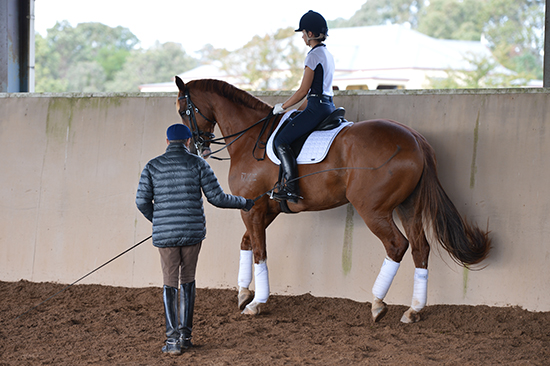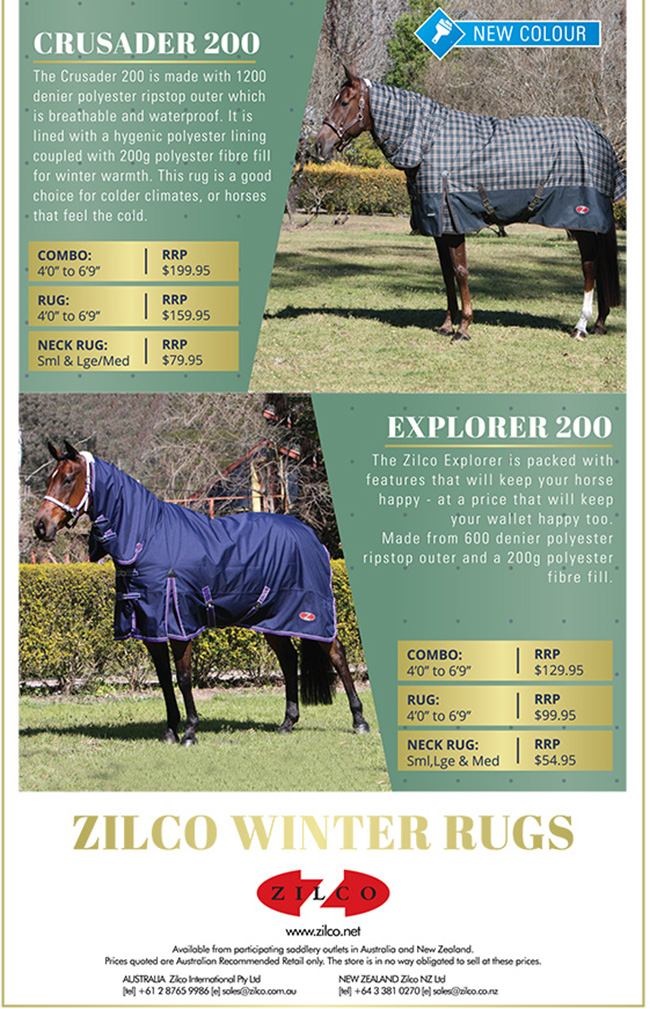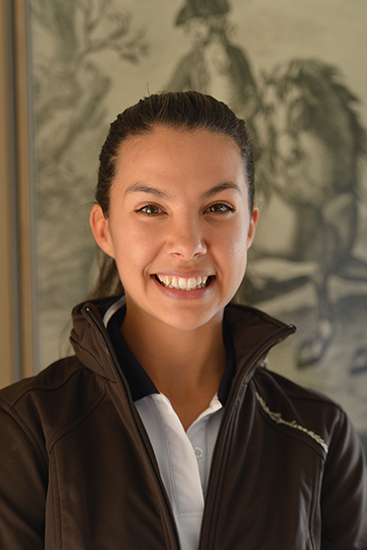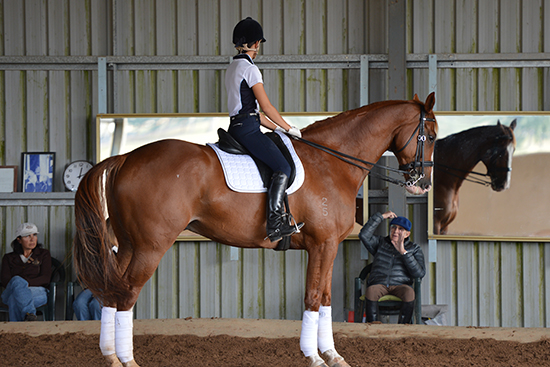 Story by Chris Hector & Photos by Roz Neave
Story by Chris Hector & Photos by Roz Neave
It’s like watching an equine pas des deux, the trainer, Miguel Tavora, and his 18 year old student, Grace Kay, and her lanky chestnut gelding, Karingal Jamirquai. But this dance is more in the mind of the participants. The Portuguese riding master has a minutely organized sequence of movements scheduled, and the young rider seems to be reading his mind, often, before Miguel gets a chance to suggest a correction, Grace has taken the matter in hand and anticipated the Master’s instructions.
“Grace is like a sponge, she absorbs, she takes in everything you tell her. She enjoys learning, she is prepared to do the work, she goes away, and when she comes back, she has been working on that sequence of exercises, trying to understand what I have told her. It is always very rewarding to teach someone like that – she is not like the ones who go away and when they come back they have forgotten everything.”
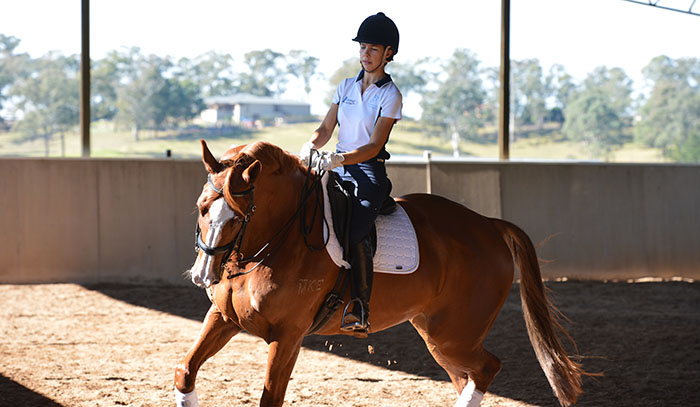
Sometimes in the lesson she was anticipating what you were going to ask her…
“That is because she knew already the sequence, I like it when they do that, because it proves that they understand what you are doing. When the trot was becoming faster and out of balance, she felt that before I told her, and did the right thing. That is my best reward because it shows she understood what I told her before.”
That preparation that you do, it seems that the horse never has the chance to become heavy in the hand…
“That is what we try to do, choose the correct gymnastics, the correct exercises, that makes a horse stay all the time balanced, all the time the rider is able to control the impulsion to make this balance, that’s what I try to do all the time.”
So many riders seem to think, oh the horse will be heavy when I start working him, but as I establish the exercises, I will be able to make the horse lighter…
“That is wrong, if they are not light, they are not balanced, and if they are not balanced then everything you do is wrong. If they are putting weight in your hand, they are out of balance and everything you do is wrong. Why not begin in the correct way? Maybe you don’t get the big trot straight away, okay he has a small trot, but it is balanced, and in five or ten minutes you have the big trot, but a big trot that is useful and correct.”
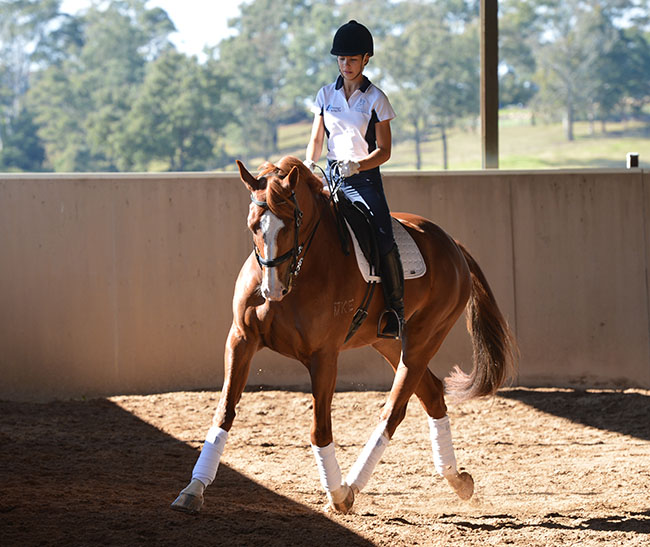
That little circle of yours, that is the first step in balancing the horse…
“That comes from Nuno Oliveira, I don’t want to know how many years ago, but many many years ago – from him I learnt that every time, you put the horse on your aids, make your horse round, without having to push him against a brick wall. You are just bending him, but by that lateral work you make him soft, he starts bending and stretching. Stretching – suppleness. He becomes engaged, he becomes balanced, and we can start to work, and if we lose it – like today when Grace’s horse was losing it a bit on the canter and trying to become heavy, too strong, I break it up, make a little small circle, establish, re-set and go again. The horse is always under control, the rider is always controlling the horse and making him do the correct gymnastic, in order to make him develop the physical ability to do what is required. It is just like the Rule Book says.”
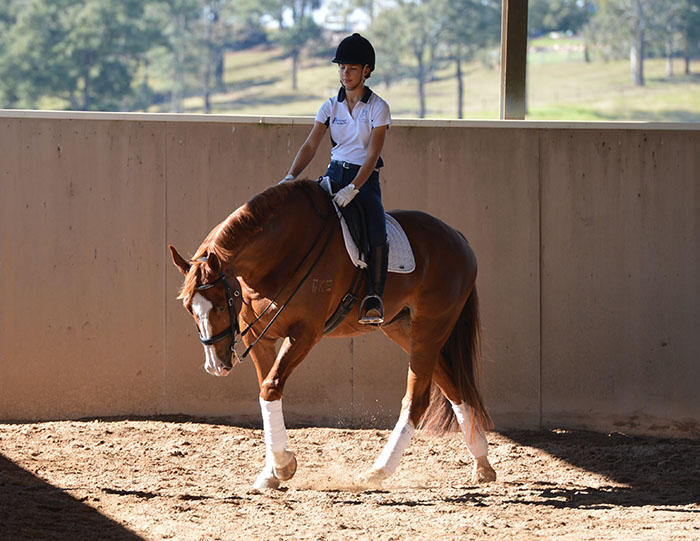
Still not every lesson goes to plan, and Gerry who after all is by the Jazz son, Jive Magic, has a bit of a spook at the strip of light on the floor. But this is no reason to get crude or heavy…
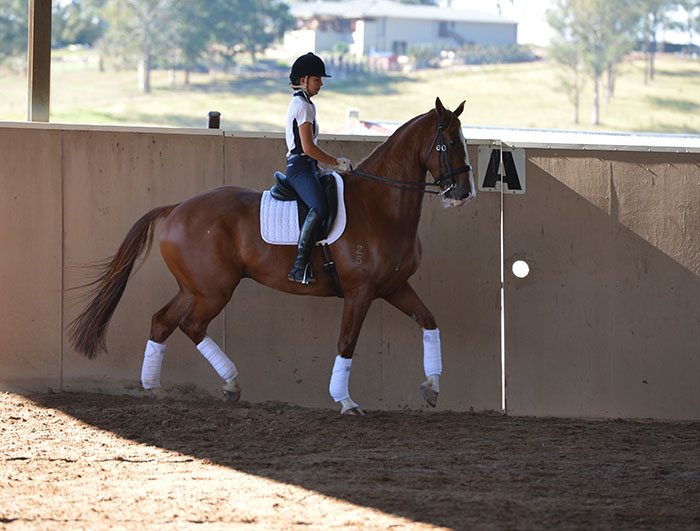
Grace simply, quietly, keeps taking him to the scary place in the school but never punishing him for his fear:
“When they make a mistake, they are not doing it because they are naughty, when Gerry was spooking, he was just having a ‘Gerry’ moment, he was scared, a bit confused – he’s a bit special. I don’t punish them, giving them a pull or a kick is not going to help them at all. Just take it easy and go round again! Go around until he understands that those ‘light lions’ aren’t going to eat him.”
But, says Miguel, approach in such a way that the horse is not looking directly at what frightens him:
“The light was coming in between the kick board and the sand, and he was looking at that… and with the camera there he was already a bit scared. What is important to me is if the horse is frightened of something, don’t let him look face on at what is frightening him – bend him to the other side. He will still see what he is frightened of, because his eyes are on the side of his face, but he is not focused on that. You have taken away that focus, and you can push him laterally past whatever frightens him. If you point him directly at it, then your horse sees a lion, just disguise, point him to the other side, and approach calmly in a shoulder in, make a couple of circles… if you are doing something difficult, don’t do it there because your horse is not comfortable. Go to another place, and when you have your horse on the aids to you, take him to where he is frightened. Never point him straight at what frightens him.”
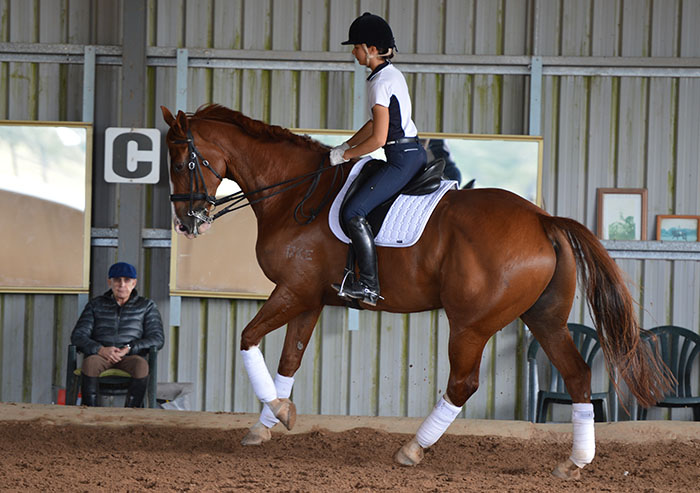
And the horse gradually relaxes again, and the work is that distinctive choreography that marks Miguel’s work, using lots of lateral work to balance the horse, and counter-act his tendency to leave his hind legs behind.
The Master explains: “Each exercise is a step, a preparation, for the next exercise. We start by making the horse loose, and relaxed, then supple, and after suppleness, straight and forward – it’s the training scale. It is logical, the horse has to be relaxed, the horse has to be balanced, and we have an exercise to make him relaxed, an exercise to make him balanced, an exercise to make him supple and then an exercise to develop the impulsion and straightness. We should plan our lessons like this. We should not start collecting when the horse is not supple, don’t try to develop impulsion if the horse is not balanced. Don’t start trying to balance a horse that is not relaxed… It is logical, just following the rational scale of training.”
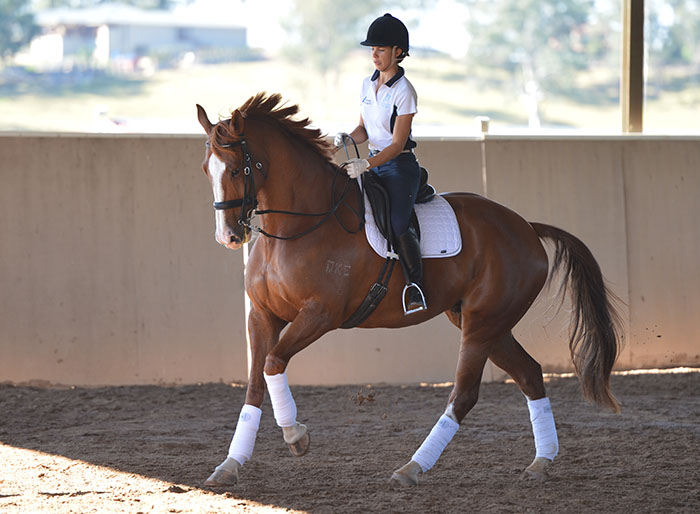
“The secret is to know what kind of work each horse needs to achieve the training aims, that is what is more difficult, and we are all the time looking, thinking, researching, remembering the horses you trained in the past, the horses that you rode, that gave you the experience – and then you pass on that experience when you teach. Perhaps today I asked too much in the piaffer because the horse was going so well, so I know I made that mistake and the next time I work with this horse, I will back off a bit. That is not avoiding the problem, it is thinking, is the horse is ready, physically and mentally, to accept what you are asking in that movement.”
Okay, you say you made that mistake, but the horse wasn’t frightened or upset…
“Not at all, there was one moment when he showed a bit more tension, and immediately I saw that tension, I backed off straight away. You can’t go on because he is not going to understand anything, from then on. I start asking less, more often, perhaps, but each time he gets a bit more confident, a bit more, a bit more. That is good.”
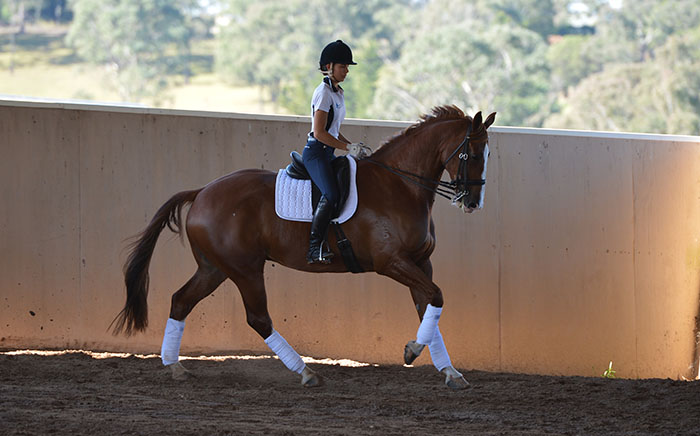
I thought I had all your exercises in my head, but today you were doing a new one, renvers down the long side into a medium trot diagonal…
“You haven’t see them all. Every horse that comes, you have to adapt different exercises that this particular horse’s needs. With that horse, with the renvers I make him flex his hind legs, flex his hocks. With this sort of horse sometimes they have the tendency to disengage when they lengthen the stride. In this exercise, with the renvers we flex the spring and then in medium trot he stretches the spring in the correct balance. Collection to extend, collection was invented not to stay collected, but to go from the collection to another movement – to extend, to gallop, whatever.”
You always start a new exercise on the left side?
“The left side is the easiest side for 99% of horses because like we are, they are stronger on the right side than they are on the left, so it is easier for them to stretch the right side. In the beginning when they are not fully trained, for the great majority of movements, it is easier on the left because they can stretch the right side. If I start on the easier side, the horse is straight away more sympathetic with my work, he is more comfortable, and then when we go to the more difficult side because he is feeling more comfortable, it is not so hard and there is less chance of him resisting. Even later on, in some movements, there is nothing wrong with going back to the left side.”
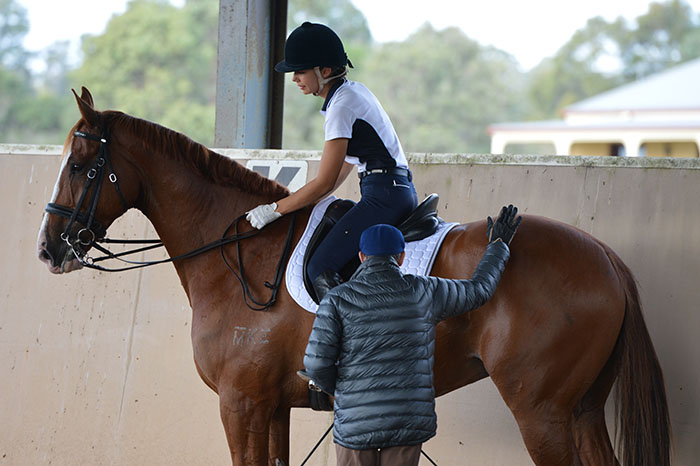
“There are some horses that are different, that are easier on the right side, like we have left and right handed people. There are all sorts of explanations. Maybe it is because they are lead from the left so it is easier for them to stretch on the right side, some say it is the way they lay in the mare’s body – one instructor he came to Australia and said, all horses are bent naturally to the left, except in Australia, they are to the right because it is on the other side of the world. I think we have no way to explain, they are like us, left or right.”
And do you think this talented young rider has the talent to go all the way?
“Absolutely.”
Next meet Grace
After the lesson, it was time to find out a little more about Grace Kay, whose grace in the saddle has been remarked upon by Greg Best at the Young Jumping Horse classes at DJWTS, and more recently, Christoph Hess in his Sydney clinic.
“I’ve ridden since I was about three. I’ve been on horses, running around bareback. I started dressage when I was about five. About a year and a half ago, I started jumping with Fab (Farberge). I did little baby jumps when I was a lot younger, but I started really jumping with Fab and eventing a bit with a little Thoroughbred mare I have at home, and I started coming to Miguel.”
Most people it is the other way round, they start out jumping and eventing and then move to dressage…
“Fab is really talented at jumping and all the dressage work he’s done since he was broken in helps – he didn’t do any jumping until he was about five – and he has just picked it up really easily… the striding and everything like that. He’s been really super.”
How long have you been working with Miguel?
“About a year and a half. It’s been really good, such a confidence booster to have someone there who has seen everything, nothing the horses do ever surprises him and there are always exercises you can do to help a particular problem.”
You seem to have that whole Miguel Tavora system inside you… you automatically walk through those little collecting circles before you ask for anything, change through half circles…
“It’s because Miguel explains what it is for, and why we do it. It’s not Miguel so much telling me, do it now; if I feel something is starting to happen, the horse is getting a bit flat for instance, then because Miguel has explained it to me, I know what to do. On the right rein Gerry tends to get flatter, and then he tends to compensate for increasing the tempo – then what I have to do are half halts, and back to the walk, I understand why we do it, so if it feels wrong, I know this is the way we fix that.”
And it is a pleasure, and an honour, to watch this young rider.
Grace Kay is what real equitation is all about…
This article first appeared in the September 2013 issue of THM.


